From Maintenance of the Natural Environment at Wintergreen
Wintergreen has many lots that have different real estate values by virtue of their location. Every property owner should be aware that, regardless of representations made to them, there are natural limitations to their view because of their site conditions and the surrounding lots, developed or undeveloped, on either side of them.
Naturally occurring views from some homes may be enhanced by limited and judicious pruning of trees and shrubs to create a “filtered view”. Removing large trees for the specific purpose of creating views is prohibited, however, selective cutting within individual lots can be approved if certain conditions are met.
These conditions include:
● Homeowners must apply in writing and pay the WPOA fees associated with this type of request.
● Back Lines and Sidelines must be professionally located and identified by homeowner prior to meeting with a representative of WPOA.
● A representative of WPOA will inspect the property, view sideline and backline locations and identify options available to Homeowner and/or contractor.
● Every effort will be made to protect canopy with view pockets/windows established under the canopy.
● To minimize fire fuel risk, any cuttings will be chipped or removed from the property.
● Costs to conduct work is the responsibility of the homeowner.
As a general rule, cutting in the open space is prohibited. Site-specific exceptions for limited cutting may be granted by WPOA staff on a case by case basis. Open space selective cutting/pruning may be granted if:
● The property originally had an approved/authorized view and cutting is needed to maintain a similar view.
● Lot topography supports a view with minimal homeowner lot and open space cutting.
● Previously approved cutting in the open space now requires maintenance of view.
Failure to follow covenants and the tree cutting policy approved by the WPOA Board could result in punitive action on the part of WPOA against homeowners and contractors. Penalties imposed could include the financial penalties described below, litigation, restitution, and/or liens placed on a homeowner’s individual property.
The financial penalties related to unauthorized tree cutting will depend on the extent of the unauthorized cutting and the size of the trees removed/affected by the cutting. Penalties will be levied based on the restitution cost, which is those costs to return the area to its precutting condition.
Restitution for the removal of smaller trees will include all costs associated with having a professional tree company supply, install and nurture trees of similar size and variety. Restitution for removal or intentional damage to large mature trees will include all costs associated with having a professional tree company supply, install and nurture the largest trees available commercially. The cost of restitution could range from as little as $5,000 for very minor infractions to more than $50,000 for extensive cutting. Remember, unauthorized cutting in the open space is a willful act on the part of homeowners and/or contractors to enter property that they do not own for the purpose of removing valuable forest and doing damage to private property.
Definitions:
Backline – the boundary line between the owners parcel and the open space or other privately owned parcel directly behind it.
Sidelines – the boundary line along both sides of an owner’s parcel between the owner’s lot and the open space or other private property.
Selective cutting – cutting select limbs and trees making every effort to do minimal damage and remove a minimal amount.
Canopy – the part of the crown composed of leaves and small branches.
Cleaning – selective pruning to remove dead, diseased and broken branches.
Crown – the portion of the tree that bears foliage.
Host – a tree that harbors unwanted insects or disease.
Mature trees – Trees that have reached at least 75% of their typical final height and spread.
Thinning Cut or Notch Cut– the removal of a branch at its origin.
Pruning - removing branches from a tree or other plant using approved practices, to achieve a specified objective.
Reduction pruning – pruning to reduce height or width on the entire tree or one section.
Structural Pruning – pruning that influences the orientation, spacing, growth rate, strength of attachment or ultimate size of branches and stems.
Suckers – stems arising from lower trunk or roots.
Target – people or property potentially affected by a tree failure.
Topping – pruning technique to reduce the height by cutting off large branches. Generally considered poor practice.
Vegetal – relating to plants
Filtered view – thinning of smaller branches allowing the ability to see through the tree, most often under the canopy.
It is strongly suggested that owners read carefully the Covenants documents they have received and seek assistance for any areas they wish to have clarified. The above considerations do not replace the Covenants and Restrictions.
